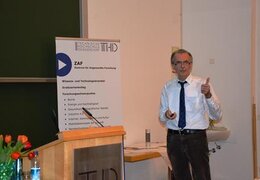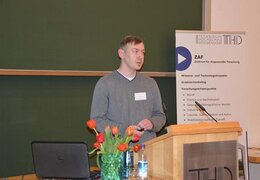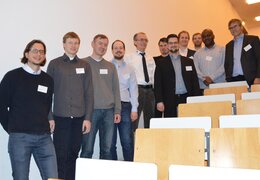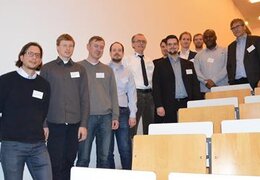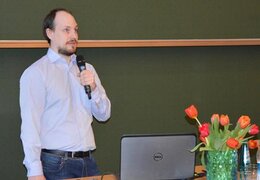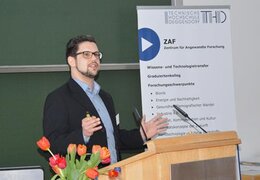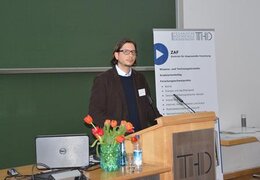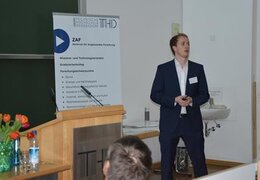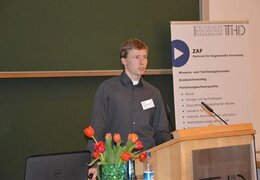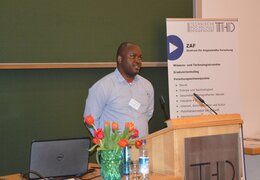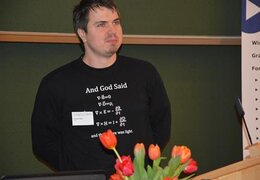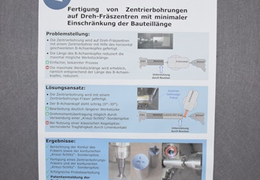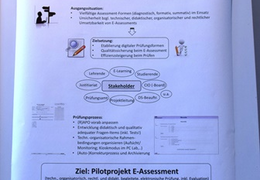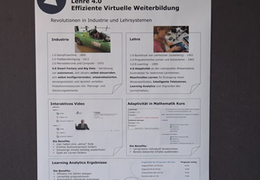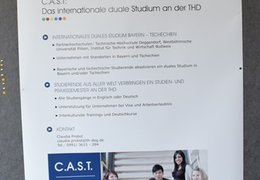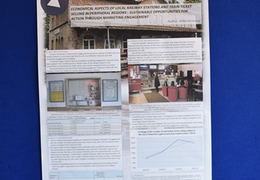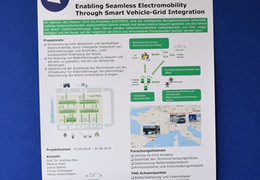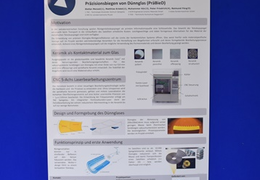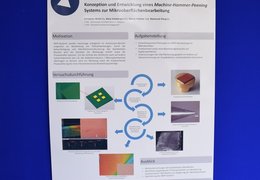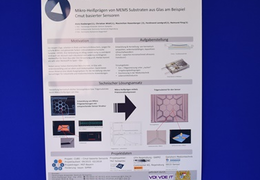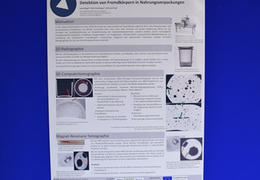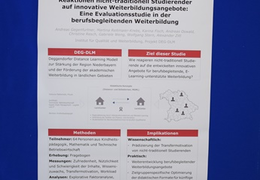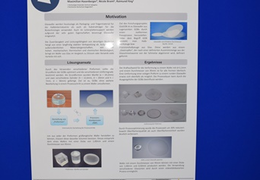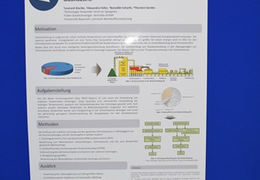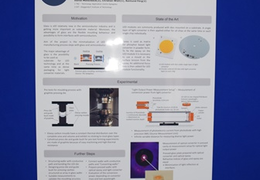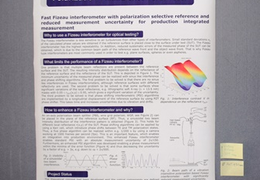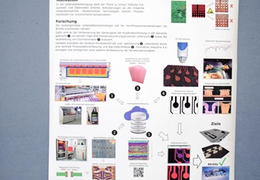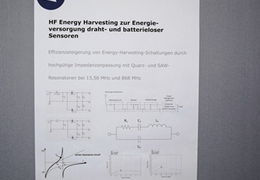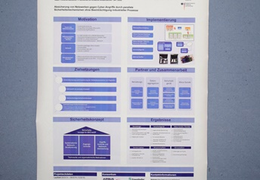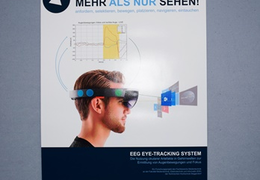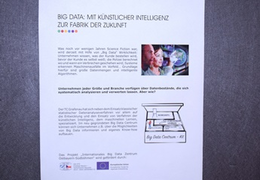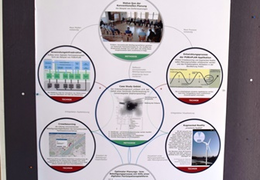Research at DIT
Pioneering & Vibrant
On 9 March 2017, young DIT scientists of presented their research projects and scientific work in the field of technology.
How can company networks be protected against cyber attacks? How can artificial intelligence be used to plan the factory of the future? How can brain wave recordings be used to determine eye movement and focus? The three topics that visitors interested in technology, especially representatives from industry and commerce, could expect at the 4th Research Day.
In ten exciting short lectures, you learned about the technically oriented topics on which DIT and its research campus are working and researched, and which projects exist or are planned. In addition to the lectures, 20 further research projects will be presented at the event in the form of poster presentations. There will also be the opportunity for a direct exchange with DIT researchers.
The presentation of scientific projects in an exciting short lecture was a sporting challenge for the scientists. The core message of the project should be clearly defined in the ten-minute lecture. However, the demand was high because the core statement of an innovative project had to be clearly recognizable and the lecture had to be understandable and exciting for an audience not familiar with the subject.
The best scientific lecture was awarded the "Best Presentation Award". The trophy for the presentation was developed this year by the design class of the Glasfachschule in Zwiesel.
More pictures of the event and the poster session can be found in the Owncloud.
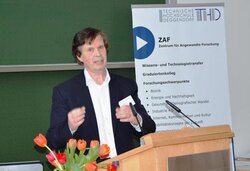
The 4th Research Day opened with a lecture by the internationally renowned patent expert George Whitten, Vice President of Qualcomm Europe Inc. In his keynote he gave insights into patent strategies. His expertise is in demand all over the world, for example in major patent disputes, in patent registration and in the acquisition of patent rights.
As in the previous year, the "Best Presentation Award" was presented for the best presentation of the research results. The jury consisted of three members: Professors Dr.-Ing. Terezia Toth, Professor at the Faculty of Electrical Engineering and Dr. Armin Eichinger, Professor at the Faculty of Applied Economics and Head of the Institute of Human and Technology, IMUT, as well as Dr. Kristin Seffer, Head of the Research Training Group at the TH Deggendorf.
The trophy for the presentation was developed this year by the design class of the Glasfachschule in Zwiesel. In the course of the winter half-year, a total of five designs were created, among which the object by Lisa-Marie Mühl was selected, as the combination of unique handicraft technology in the field of glass and the reference to science is most successfully shown to advantage.
Quote Lisa-Marie Mühl: "The technically and modern award lives from the contrast between solid crystal glass and a unique glassmaking technique in combination with perfect craftsmanship. The thread technique symbolizes the complexity of a research project in a special way. The matt coat with its window provides an exciting insight into the interior. The speaker gives insights into his scientific work, he carries the results to the outside world and creates transparency for the public".
The collaboration with the Glasfachschule Zwiesel was a premiere and a stroke of luck. The glass technical school is one of the first glass technical schools in Germany with its own manufactory in which traditional handicraft techniques in the field of glass are further developed.
Experienced master glassmakers teach the students handcrafted quality, unusual finishing techniques and the love of glass as a material. In addition, glass is an industrial, craft and art product for the Bavarian Forest region.
The Glasfachschule is an educational institution whose graduates are able to design and implement creative processes. They could become future THD students or be interested in joint projects in their future careers. In this way, the innovative potential of the region is promoted and strengthened.
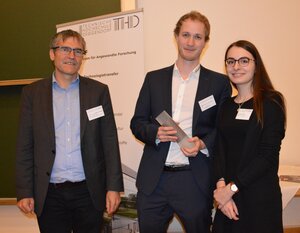
The award was presented by Prof. Dr.-Ing Andreas Grzemba, Vice President for Research and Knowledge Transfer to Gabriel Herl, M.Sc. (Univ.), who presented the project "Fusion of several computed tomography images to improve image quality".
Class Product Design Glass: Stefanie Eggelsberger, Jessica Kittel, Tobias von Wedelstaedt, Lisa-Marie Mühl, Dongmin Lee
Responsible educators: Gertraud Tomaschko, Ronald Fischer
Rector: Hans Wudy
Wissenschaftliche Vorträge wurden zu folgenden Forschungsprojekten gehalten:
Marc Philipp Dietrich, Dipl.-Ing. (FH)/MBA
EEG-basierendes Eye-Tracking System - Die Nutzung okularer Artefakte in Gehirnwellen zur Ermittlung von Augenbewegungen und Fokus
Markus Eider, B.Eng.
ELECTRIFIC - Enabling Seamless Electromobility Through Smart Vehicle-Grid Integration
Gabriel Herl, M.Sc. (Univ.)
Fusion mehrerer Computertomographie-Aufnahmen zur Verbesserung der Bildqualität
Dr. habil. Robert Hable, Dipl.-Math. (Univ.)
Big Data - Mit künstlicher Intelligenz zur Fabrik der Zukunft
Martin Aman, Dipl.-Ing. (FH)/M.Sc.
Absicherung von Netzwerken gegen Cyber-Angriffe durch parallele Sicherheitsmechanismen ohne Beeinträchtigung industrieller Prozesse
Stefan Menzel, Dipl.-Phys. (Univ.)
PräzisionsBiegen von Dünnglas
Dr. rer. nat. Leonard Alaribe
Die Energie- und Umweltvorteile eines "SMART BATCH“ in der Glasindustrie
Simon Graf, M.sc.
Projekt MicroUAV - Sensorfusioniertes modulares Multichannel Messsystem zur Biodiversitätserfassung
Christian Merz, M.Sc.
Verbesserung des Wirkungsgrades von drahtloser Energieübertragung
Siegfried Hildebrand, Dipl.-Inform.
Projekt NePUMuk (Neue digitale Produktions- und Mikrostrukturierungstechnologien für Anwendungen bis 80 GHz) - Aktuelle Softwareansätze
